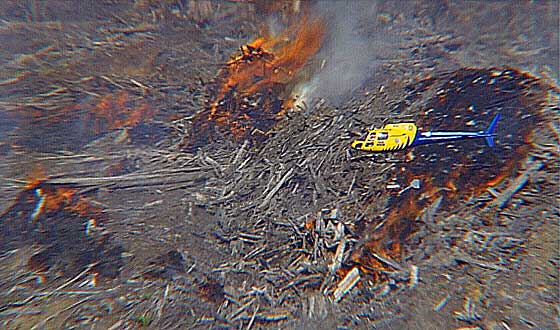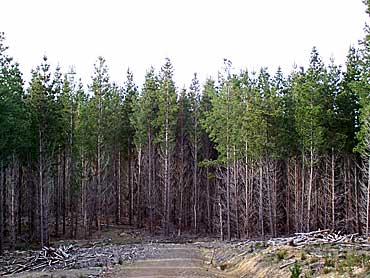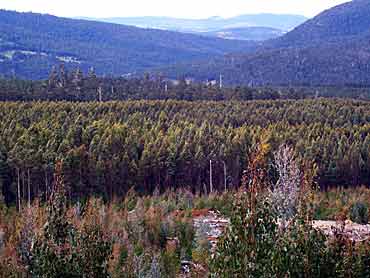|
WATER S.O.S TASMANIA - Fire
|
|
|
|
|
The Effects of Fire on Water
Catchments
The intensity and frequency of fires in water catchments
profoundly influences the hydrology of the land and water productivity
within those catchments.
The effects of fire on water catchments and their productivity
is influenced by a number of factors.
The greater the frequency of fire events, the more the structure
of forests are changed and simplified to fire tolerant species
which in turn create more volatile and fire prone landscapes.
The greater the frequency of fire events the greater the
level of nutrient loss and destruction of supporting bacteria
and micro-organisms etc.
|
| Ref: The relationship between fire and
plant nutrient loss has been documented by : Harwood and Jackson
(1975) |
SOME FORESTRY FIRES
& FIRE BOMBING IN 2008
|
|
|
|
The type and age of forest i.e., Wet Sclerophyll,
Dry Sclerophyll, and the dryness or wetness of those
forests can influence the intensity and corresponding degree
of survival of the structure of those forest and their ability
to influence the micro-climate and hydrology of the land.
Undisturbed old forests with deep litter on the forest floor
generate the highest productivity and best quality water.
|
| SEE : The
Role of Forests in Water Production |
SOME FORESTRY FIRES
& FIRE BOMBING IN 2008
|
|
Catastrophic fire in Wet Sclerophyll or old
growth Ash forests is extremely rare with an occurrence of well
over 500 if not 1000 years.
Mono-cultures of eucalypt re-growth and plantations of
all species are extremely susceptible to fire.
|
|
|
|
|
Since extensive clearfelling and land clearing
has taken place with corresponding widespread change to the
nature and structure of forests, the fire susceptibility of
the remaining old forests has also been increased due to the
“edge effect” or drying out as they become islands
in the altered landscapes of drier mono-cultures.
The problem of regeneration burns or wildfire can further
compound the decline in water quality due to an increase in
hydrophobicity, which follows high intensity fires. Hydrophobicity
can impede water infiltration and/or water percolation rates
from catchments, eucalypt forests appear particularly prone
to this phenomenon.
|
SOME FORESTRY FIRES
& FIRE BOMBING IN 2008
|
| Ref:
Kuczera 1985. |
|
|
|
|



